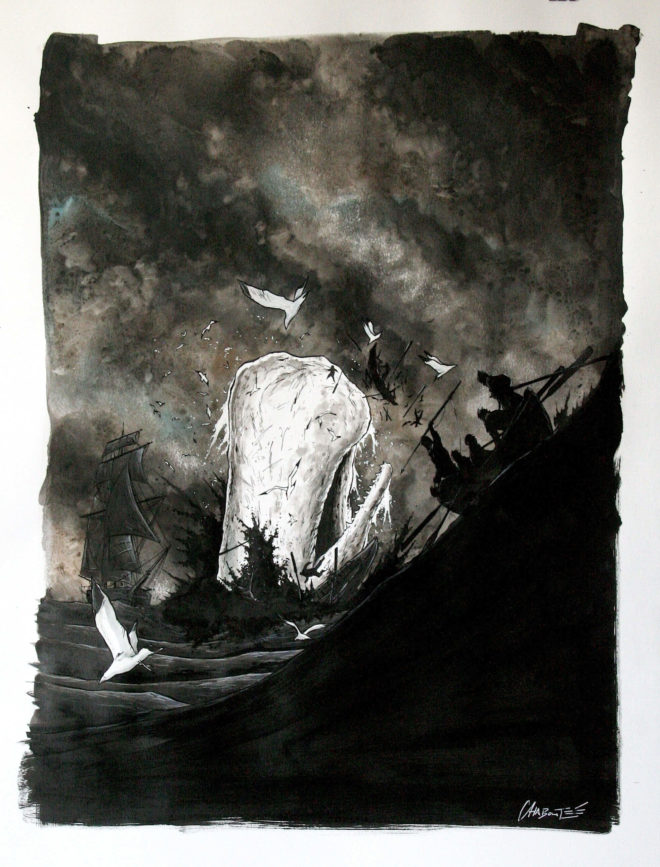With the recent release of the adaption of Laurie Halse Anderson’s novel, Speak (Macmillan), and the upcoming publication of graphic adaptions of A Handmaid’s Tale (Penguin Random House) and All Quiet on the Western Front (Dead Reckoning), there has never been a better time for librarians and teachers to explore the inclusion of graphic novels in the classroom.
While some teachers fear graphic adaptations will lead to students not reading the original classic texts, these comics offer a number of excellent teaching opportunities. In my own classroom, I have used them in the following ways:
Independent Reading:
Graphic adaptions are rich stand-alone reading experiences and a wonderful introduction to prose writers.
ESL Students or Students with Reading Challenges:
Before delving into the original prose text and reading for detail, some students’ reading comprehension improves if presented with an opportunity to preview the plot by reading a graphic adaptation. A strength of the visual medium is that students more easily recognize symbolism and can use picture clues to understand vocabulary. Unlike film adaptations, comics allow for readers to control the speed of processing.
Literary and Comparative Analysis:
Including graphic adaptions in an all-class study of a prose text promotes critical discourse around the creator’s choices and interpretations. In class, students can study the artist’s choice of color palette and its impact on mood and tone. They can compare scenes to the original. Processing questions may include:
- Does the adaptation capture the novel’s formal elements: the theme, characterization, style, tone, and plot of the novel?
- What do you notice and how do you interpret those choices in relation to the original text?
- Is the setting changed? Why and how does that impact the story?
- What does the adaptor include to include or exclude? Why do you think they made those choices? What makes you say that?
- What would you do differently? What was missing that you would have added?
- How are the characters interpreted? What evidence is there from the book to support this characterization?
- What symbols, images, colors are used repetitively in the graphic adaptation? Why?
Readers Theater:
When exploring a complex text like a Shakespearean play, readers theater is an activity that makes the play come alive, improves comprehension, and builds expressive reading skills. Using Udon’s Manga Classics or Gareth Hinds’ graphic novels, have allowed my students to better understand gesture and interpret emotion when the vocabulary is challenging.
How do you use graphic adaptions in the classroom?
Adaptations in My Library:
Manga Classics by Udon (full range of British and American Lit. Classics, including Shakespeare)
The Olympians Series by George O’Connor
The Alchemist by Paulo Coelho and Daniel Sampere
All Quiet on the Western Front by Erich Maria Remarque and Wayne Vansant
Anne Frank’s Diary: A Graphic Adaptation by Anne Frank, Ari Forman and David Polonsky
Anne of Green Gables: A Graphic Novel by Mariah Marsden and Brenna Thummler
Beowulf by Gareth Hinds
The Breadwinner: A Graphic Novel by Deborah Ellis et al
City of Ember Graphic Novel by Jeanne DuPrau, Dallas Middaugh, and Nicklaus Asker
Fahrenheit 451 by Ray Bradbury and Tim Hamilton
The Giver by Lois Lowry andP. Craig Russell
The Golden Compass: The Graphic Novel by Philip Pullman et. Al
The Good Earth by Pearl Buck and Nick Bertozzi
Graveyard Book 1 & 2 by Neil Gaiman and P. Craig Russell
A Handmaid’s Tale by Margaret Attwood and Renee Nault
The Iliad by Homer and Gareth Hinds
Kindred: A Graphic Novel by Octavia Butler, John Jennings and Damian Duffy
King Lear by Shakespeare and Gareth Hinds
The Kite Runner by Khalid Hosseini, Fabio Celoni, and Miriam Andolfo
The Lottery by Shirley Jackson and Miles Hyman
Macbeth by Shakespeare and Gareth Hinds
Moby Dick by Herman Mehlvilel and Christophe Chaboute
Monster by Walter Dean Myers, Guy Sims, and Dawud Anyabwile
Odyssey by Homer and Gareth Hinds
Romeo & Juliet by Shakespeare and Gareth Hinds
Something Wicked This Way Comes by Ray Bradbury and Ron Wimberly
Speak: The Graphic Novel by Laurie Halse Anderson and Emily Carrol
To Build A Fire by Jack London and Christophe Chaboute
To Kill A Mockingbird by Harper Lee and Fred Fordham
A Wrinkle in Time by Madeleine L’Engle and Hope Larson

